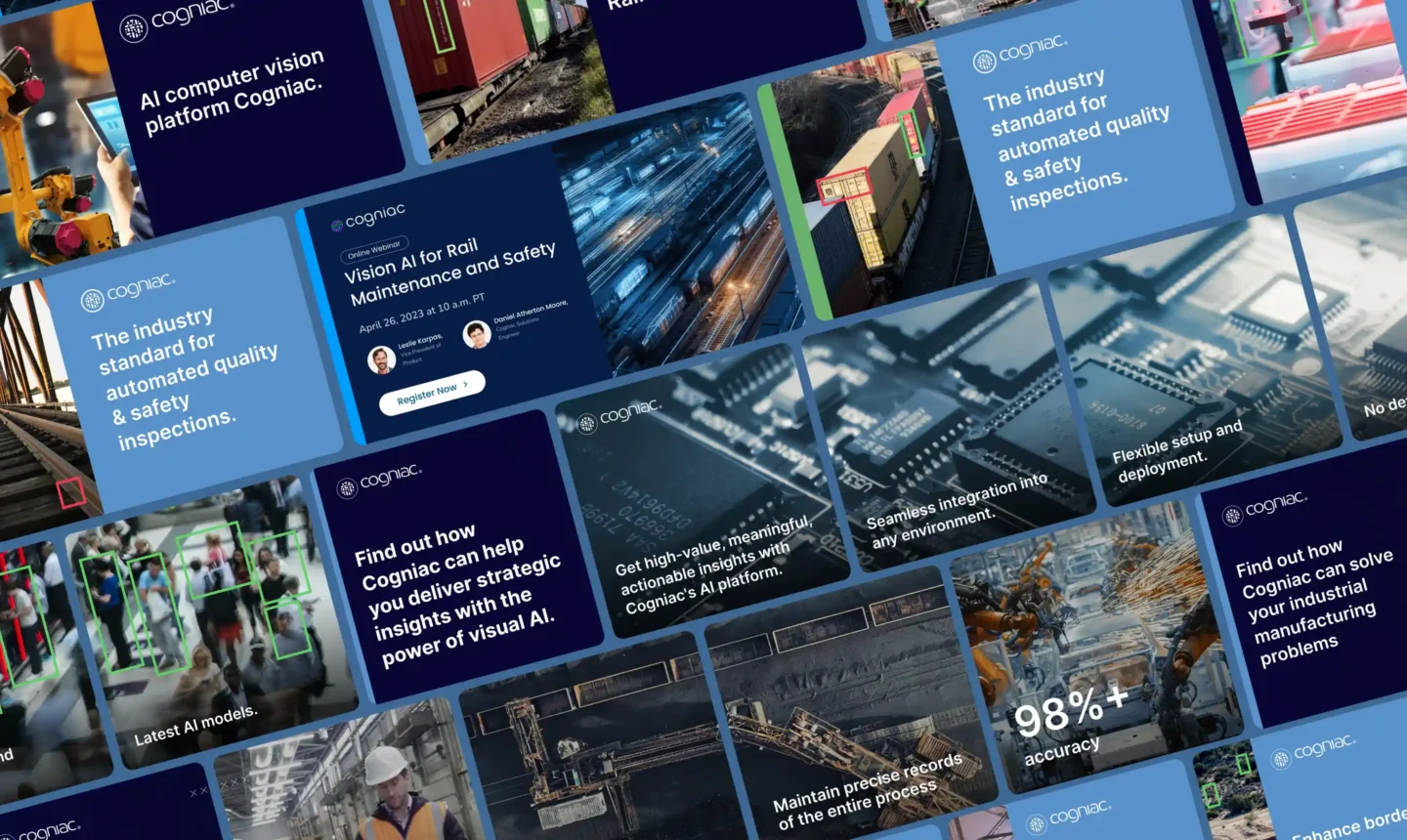
Marketing strategy and lead generation for a global computer vision AI leader
Conversion rates
11%
Avg. CTR
1.15%
Lead-to-MQL Rate
85%
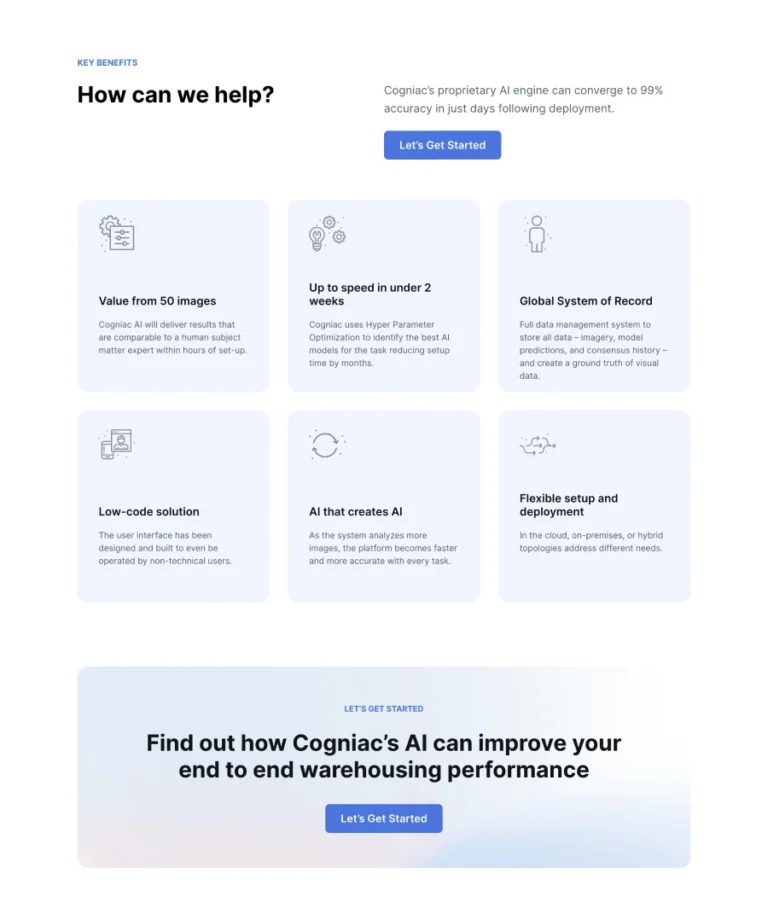
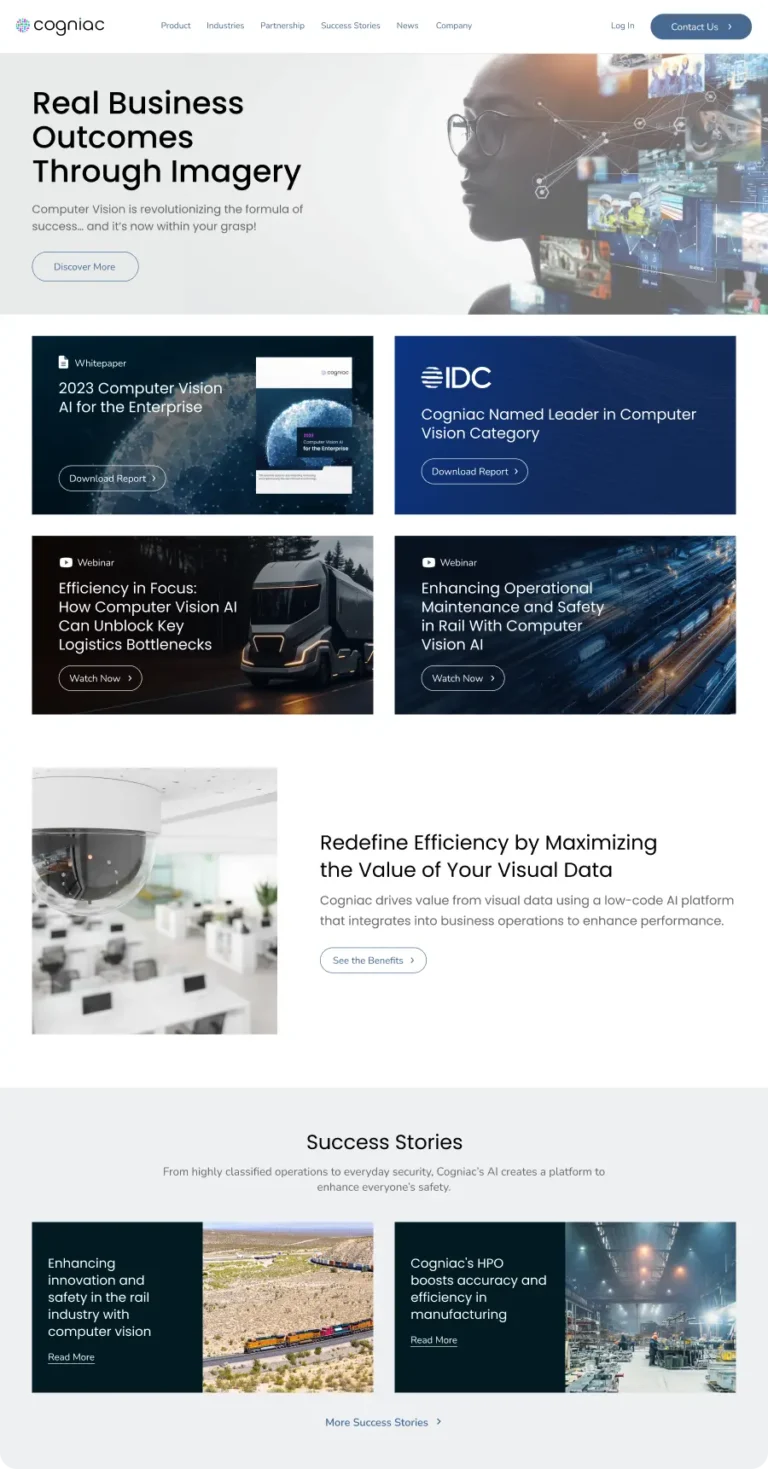
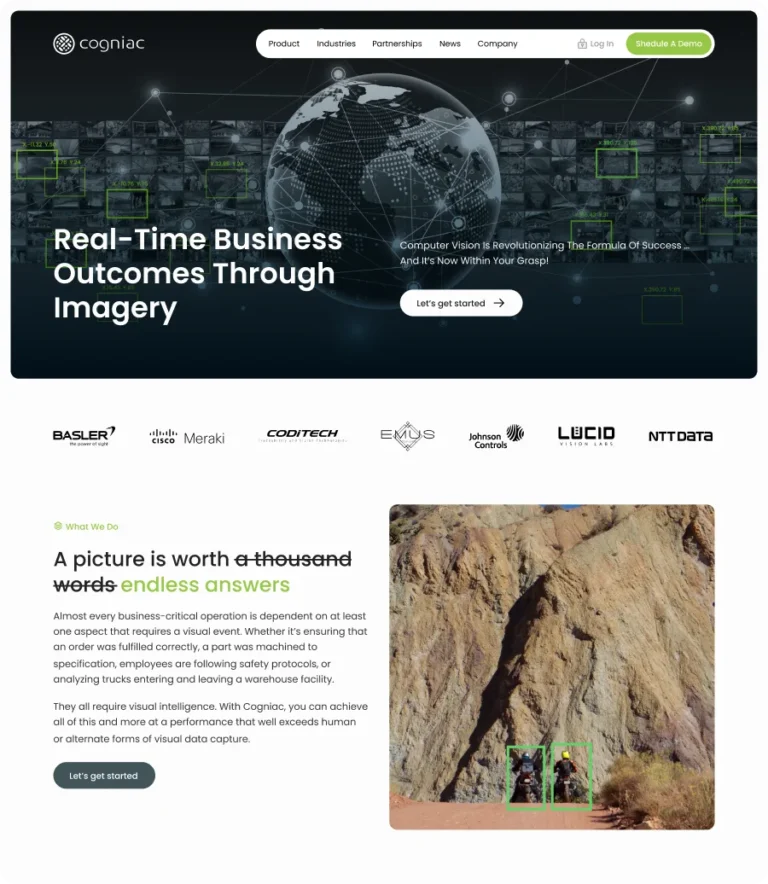
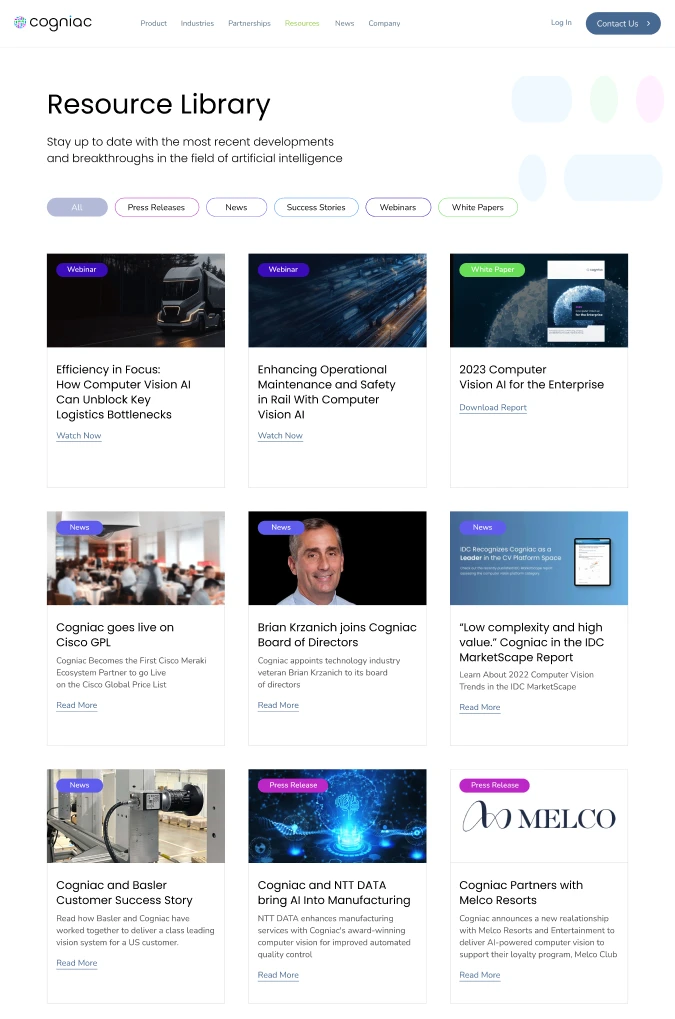
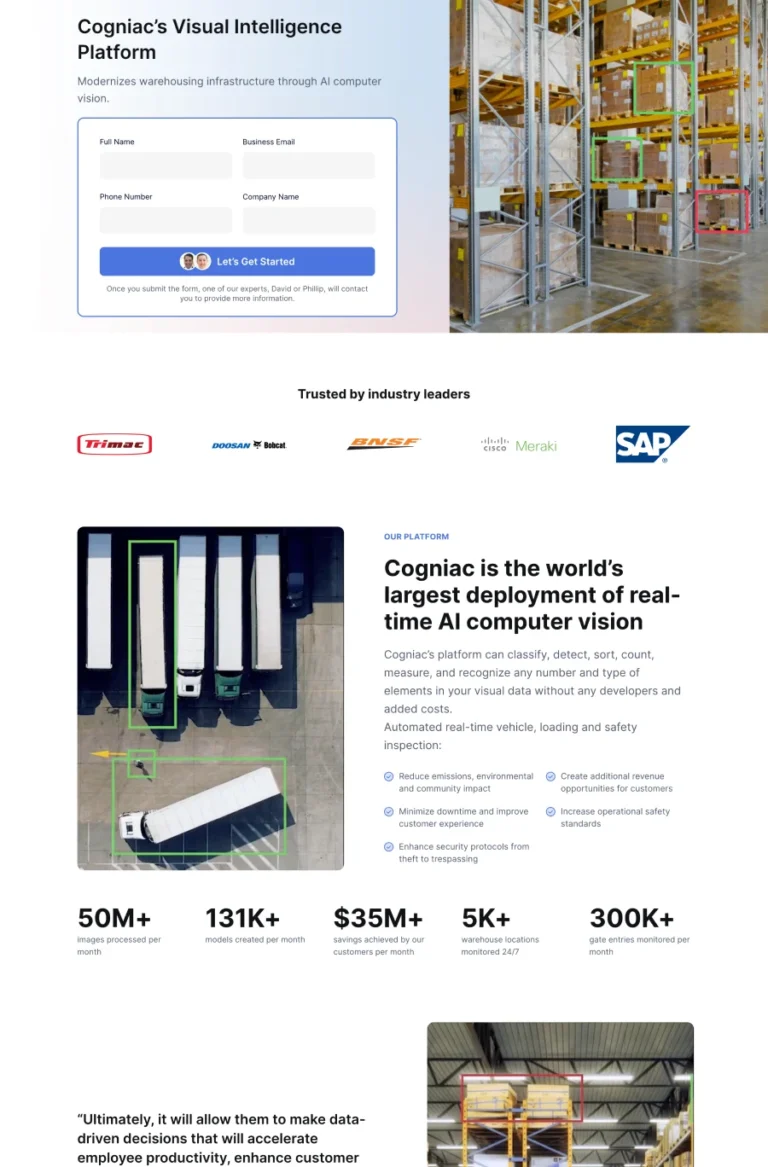
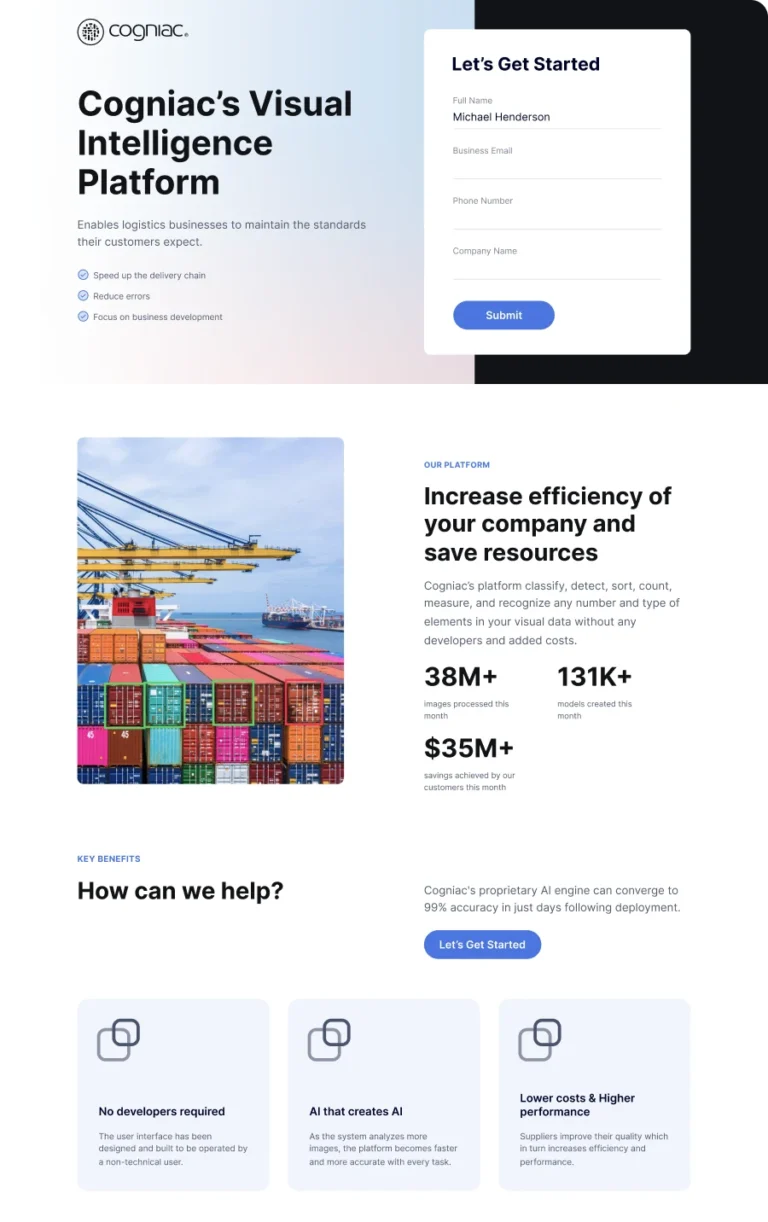
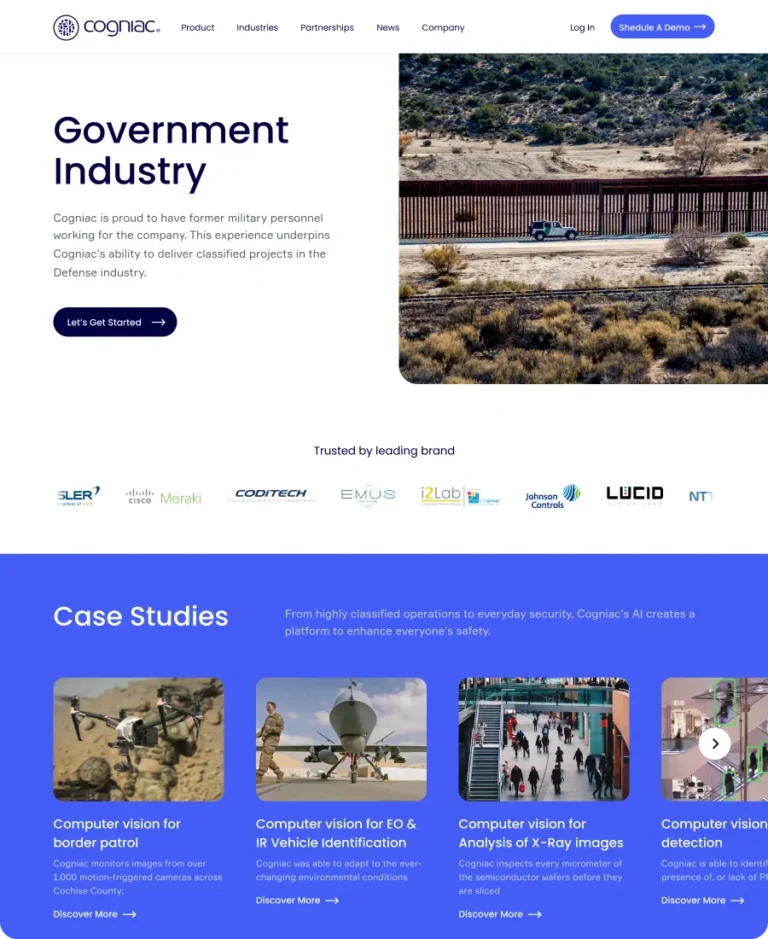
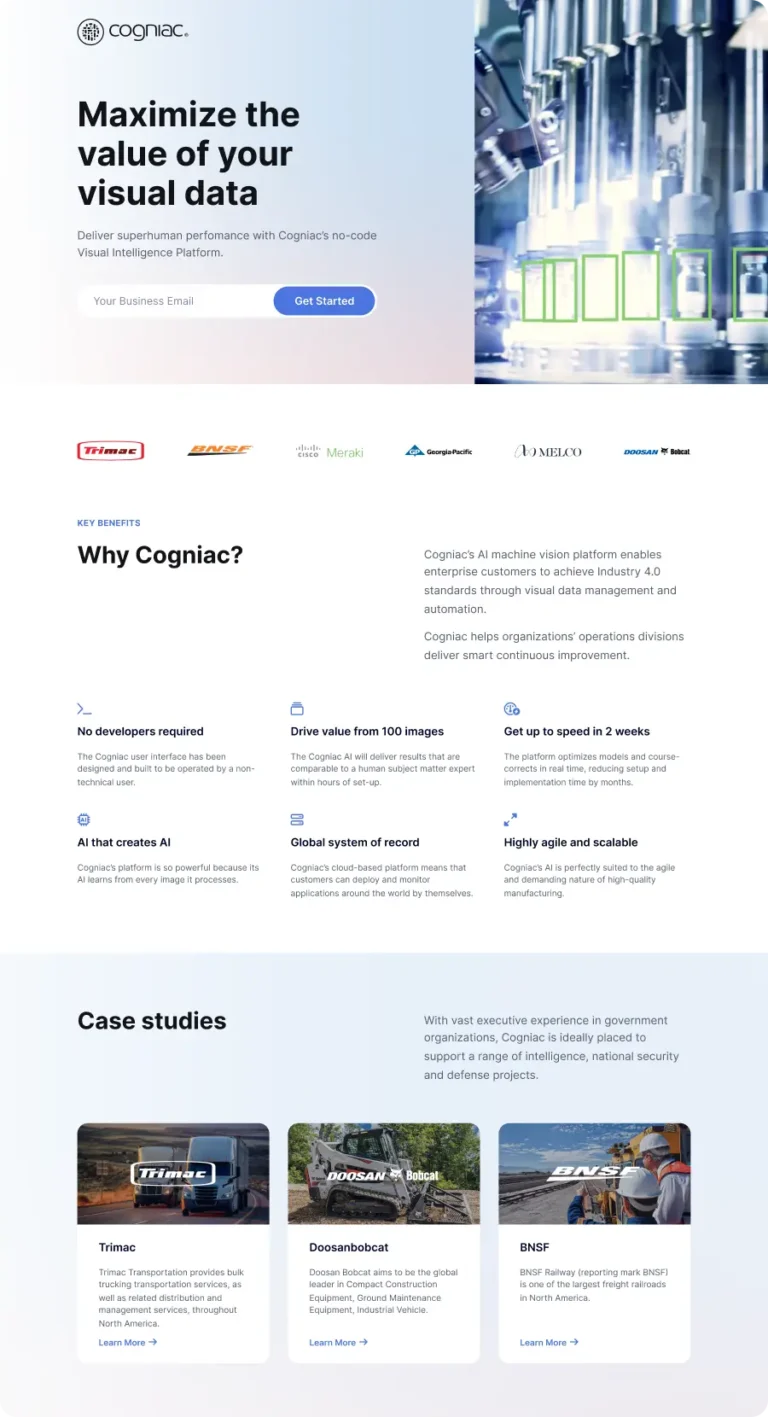
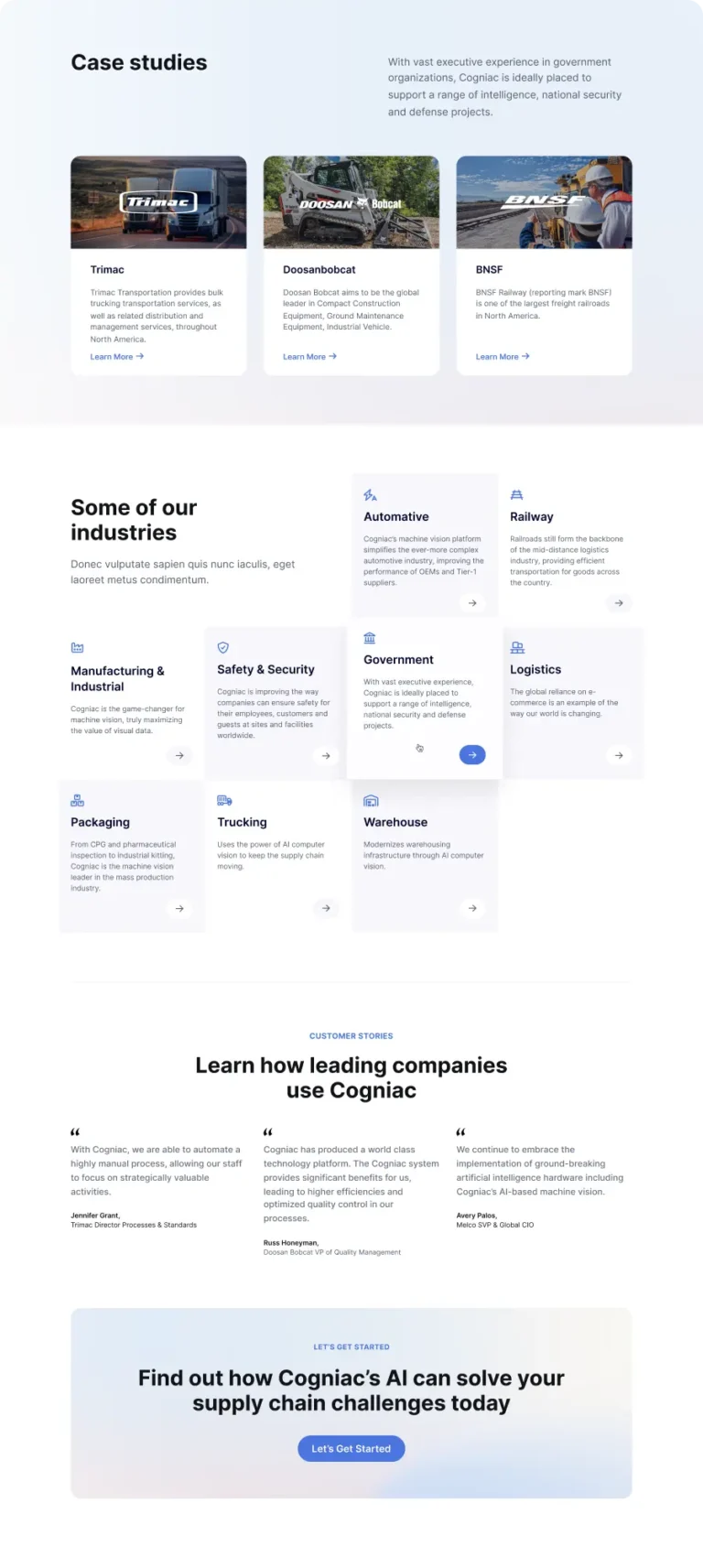
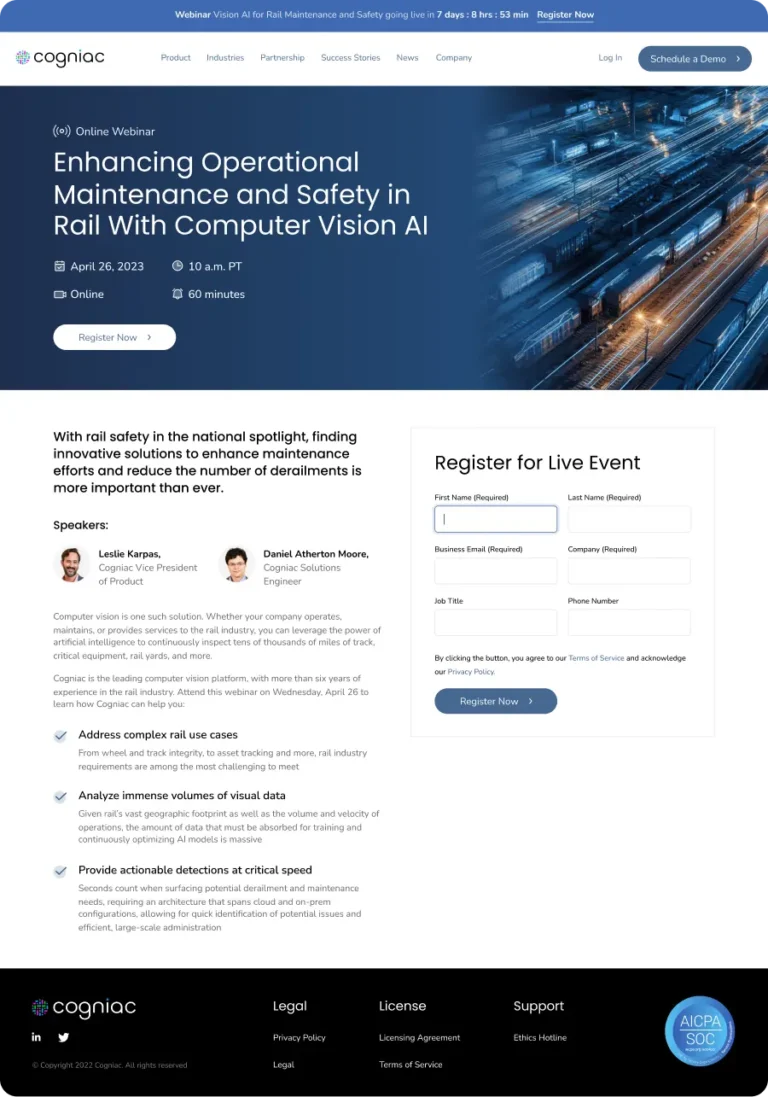
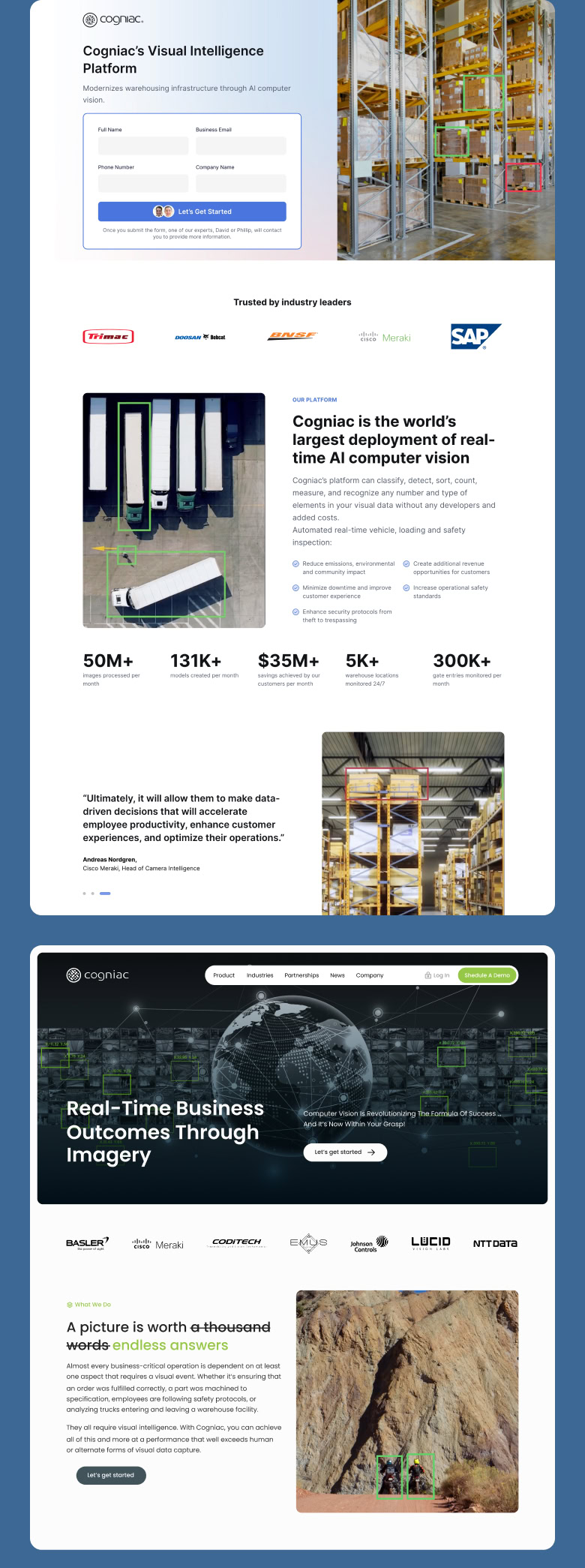
Industry Background
While the adoption of computer vision technology in business is still relatively low, a recent IDG/Insight survey indicates that 81% of companies are investigating or implementing the technology. The manufacturing segment accounts for over half of the global computer vision market revenue, but the technology has also been implemented in education, healthcare, robotics, retail, and security.
The computer vision market faces challenges, including hardware implementation costs, lack of data and use cases, and proven ROI. Businesses are hesitant to experiment with new technologies, and when they do, they often limit it to one facility or use case.
The Challenge
Cogniac aimed to close more sales across potential target industries, but the lack of successful case studies created hesitancy among customers interested in implementing the technology on a larger scale. The typical sales cycle consists of a pilot implementation, measurement of key performance indicators, and finally a full-scale production deployment. The goal of their digital marketing program was to identify the right prospects and move them closer to conversion.
Challenges included a limited understanding of computer vision among potential customers, restricted resources in terms of case studies and content, and a disconnect between the company’s goals and the generated demand.
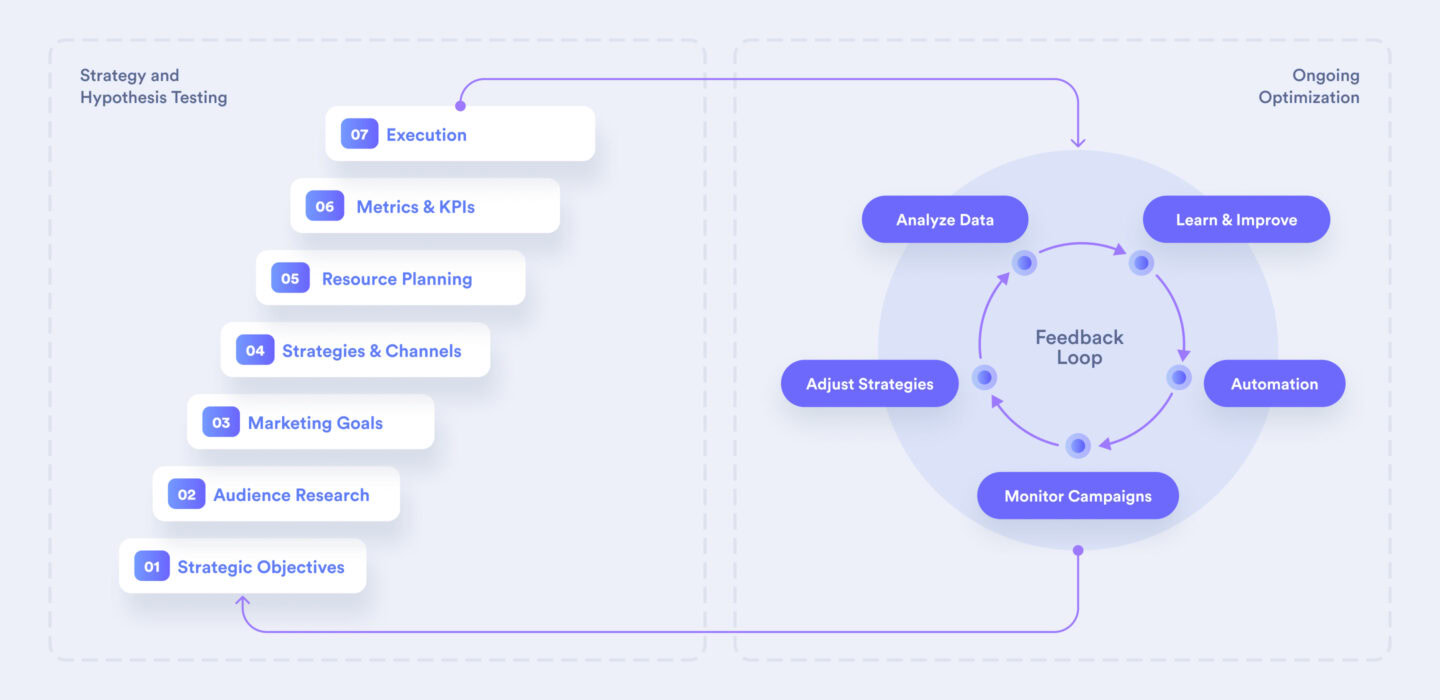
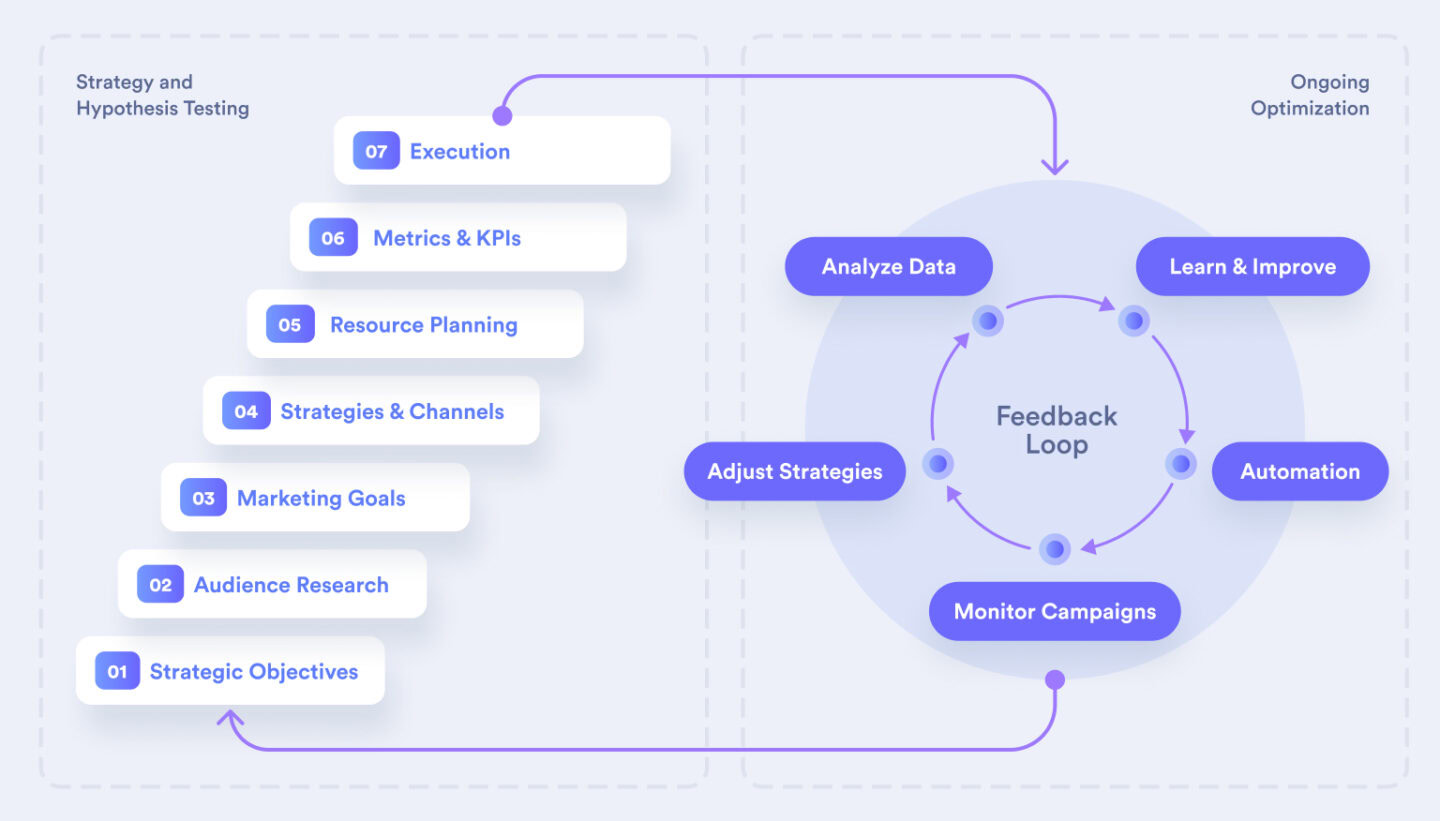
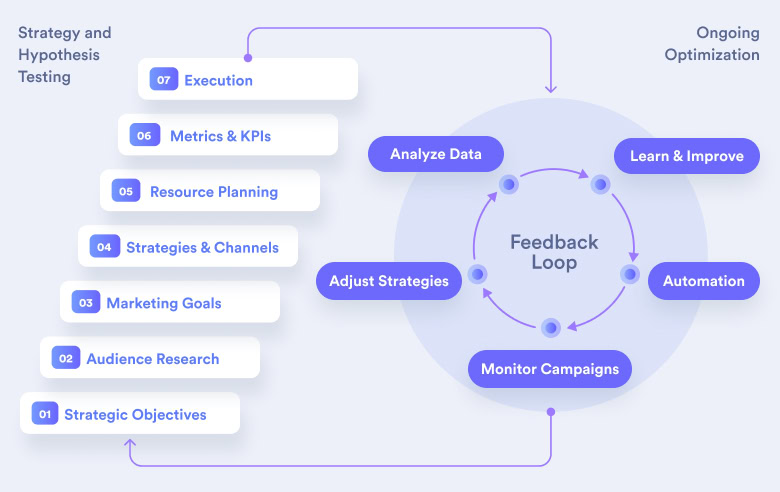
Our Solution
We conducted market research to identify target audiences, focus industries, and initial platforms (LinkedIn and Google Ads). We then ran A/B tests on targeting options, buyer personas, keywords, ad messages, creatives, CTAs, and landing page content.
LinkedIn campaigns addressed previously identified audiences and industries, testing messages, creatives, content, and CTAs. Less-performing ads and campaigns were paused and optimized, while top-performing ones were boosted.
On Google Ads, we divided the budget into industry, cross-industry, brand, and awareness campaigns. After turning off low-performing informational keywords, we grouped transactional keywords based on subject matter. Campaigns were constantly reviewed and optimized for critical indicators: keyword and landing page relevance, CTR, CPC, number of leads, CPL, and Search Impression Share.
Results Through A/B testing, we identified the most suitable targeting options and ad combinations within the first few weeks. By prioritizing industries, cases, and personas that showed interest and willingness to engage with sales, we started generating up to 5 leads from LinkedIn and 5–7 leads from Google Ads per week.
Summary
The lead generation program continues to run and bring leads for Cogniac.
While scaling and optimizing paid channels, we also apply the learnings to organic channels, such as social media and organic search, to better understand audiences, craft resonant messages, and invest in high-demand content.
Our partnership with Cogniac has created real opportunities in the form of active conversations, closed deals, and a better understanding of target industries and product positioning.
We’re impressed with their responsiveness and accountability.
Dizzain’s work has improved the quality and volume of the client’s leads. Flexible and organized, the team adheres to the established timeline and budget and provides quick responses to questions and concerns. They are accommodating of the client’s needs and committed to the project’s success.

Steven Hartman
Chief Marketing Officer, Cogniac
